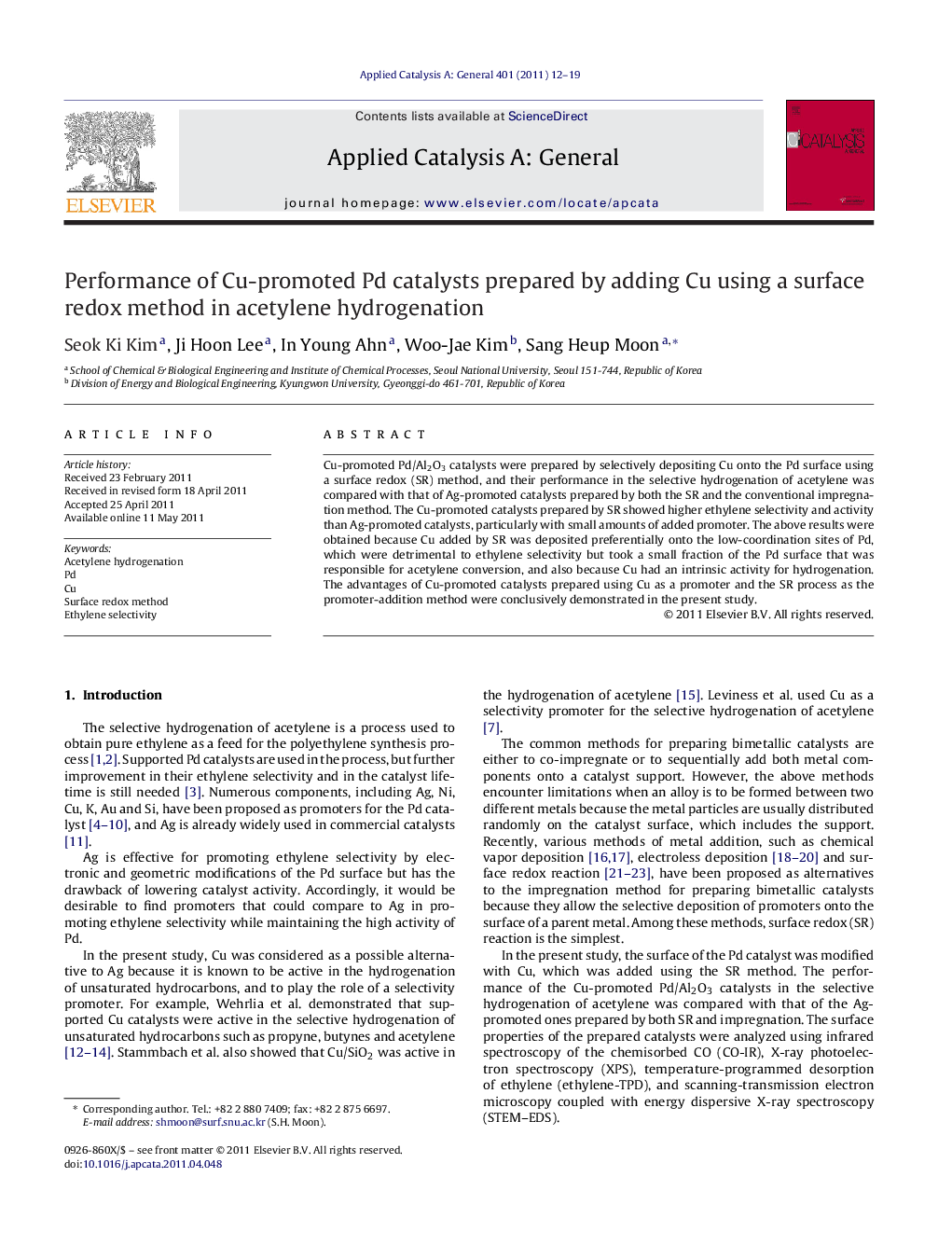| Article ID | Journal | Published Year | Pages | File Type |
|---|---|---|---|---|
| 41555 | Applied Catalysis A: General | 2011 | 8 Pages |
Cu-promoted Pd/Al2O3 catalysts were prepared by selectively depositing Cu onto the Pd surface using a surface redox (SR) method, and their performance in the selective hydrogenation of acetylene was compared with that of Ag-promoted catalysts prepared by both the SR and the conventional impregnation method. The Cu-promoted catalysts prepared by SR showed higher ethylene selectivity and activity than Ag-promoted catalysts, particularly with small amounts of added promoter. The above results were obtained because Cu added by SR was deposited preferentially onto the low-coordination sites of Pd, which were detrimental to ethylene selectivity but took a small fraction of the Pd surface that was responsible for acetylene conversion, and also because Cu had an intrinsic activity for hydrogenation. The advantages of Cu-promoted catalysts prepared using Cu as a promoter and the SR process as the promoter-addition method were conclusively demonstrated in the present study.
Graphical abstractFigure optionsDownload full-size imageDownload high-quality image (121 K)Download as PowerPoint slideHighlights► Cu was selectively deposited onto Pd using a surface redox method. ► Cu was deposited particularly on the low-coordination sites of Pd. ► Added Cu promoted the ethylene selectivity of Pd in acetylene hydrogenation. ► Activity for acetylene hydrogenation was higher for Pd–Cu than for Pd–Ag.
